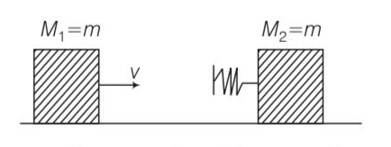Class 11th
Get insights from 8k questions on Class 11th, answered by students, alumni, and experts. You may also ask and answer any question you like about Class 11th
Follow Ask QuestionQuestions
Discussions
Active Users
Followers
New answer posted
5 months agoContributor-Level 10
This is a Long Answer Type Questions as classified in NCERT Exemplar
Ans: The points of the Bohr's model that can be consider are as follows: -
(i) Electrons revolve around the nucleus in a fixed orbit with fixed energy
(ii) The energy is absorbed or released when the electron moves from one energy level to another. The energy for the nth stationary state is given by
En = -2 p 2me4 /n2h2
Where
m = mass of the electron
e = charge of the electron
h= Planck's constant If an electron jumps from ni to nf then we have
D E= Ef - Ei = 2p2me4 /h2 [ (1/ni 2 ) - (1/nf2 )]
v = DE /hc = 109677 [ (1/ni 2 ) - (1/nf2 )]
New answer posted
5 months agoContributor-Level 10
This is a Long Answer Type Questions as classified in NCERT Exemplar
ANS- For the emission of electrons from metal the frequency of the striking light should be higher than that of its threshold frequency. We have
h ν = hν 0 + K.E
ν 0 = ν - K.E/h ……. (1)
Given
ν = 1015 s -1, K.E = 1.988 X 10-19J
Thus (1) gives
ν 0 = 7 x 1014 s -1
Given
λ = 600 nm
ν = c/ λ = 5 x 1014 s -1
As ν 0 > ν, thus the electrons do not emit.
New answer posted
5 months agoContributor-Level 10
This is a Long Answer Type Questions as classified in NCERT Exemplar
ANS-When the beam of light gets exposed to the metal surface then the electrons get emitted from the metal. This effect is said to be photoelectric effect and the emitted electrons are said to be photoelectrons. The result of photoelectric experiment are as follows: -
(i) There is no time gap between the striking of a light beam and the ejection of electrons from the metal surface i.e., electrons emit as soon as a beam of light strikes the metal surface.
(ii) The number of electrons ejected is directly proportional to the intensity of light.
(iii) For every metal there
New answer posted
5 months agoBeginner-Level 5
Human Physiology is the study of various functions and mechanism to sustain human body. It comprises how various cells, molecules, tissues, organs work to sustain life of human body.
New answer posted
5 months agoBeginner-Level 5
There is no specific data which can explain how many questions are asked from a particular chapter in Human Physiology. Candidates will have to prepare all the chapters to score well in the exam
New answer posted
5 months agoBeginner-Level 5
Around 12-14 questions are asked from Human Physiology which is a part of Zoology in NEET. The weightage is around 45 percent in Zoology segment.
New answer posted
5 months agoBeginner-Level 5
Yes. As NEET is one of the toughest exams, candidates must not leave any stone unturned. They are advised to throughly prepare all the Human Physiology chapters in order to score good marks in the exam
New answer posted
5 months agoBeginner-Level 5
The chapters of Human Physiology for NEET preparation are given below:
- Digestion and Absorption
- Breathing and Exchange of Gases
- Body Fluids and Circulation
- Excretory Products and their Elimination
- Locomotion and Movement
- Neural Control and Coordination
- Chemical Coordination and Integration
New answer posted
5 months agoBeginner-Level 5
Human Physiology is fifth unit in NCERT book of class 11th. It comprises total six topics, covering various aspects of digestion, respiration, circulation, excretion, and locomotion.
New answer posted
5 months agoContributor-Level 10
This is a multiple choice answer as classified in NCERT Exemplar

Taking an Exam? Selecting a College?
Get authentic answers from experts, students and alumni that you won't find anywhere else
Sign Up on ShikshaOn Shiksha, get access to
- 65k Colleges
- 1.2k Exams
- 679k Reviews
- 1800k Answers

